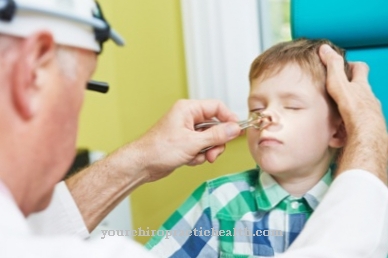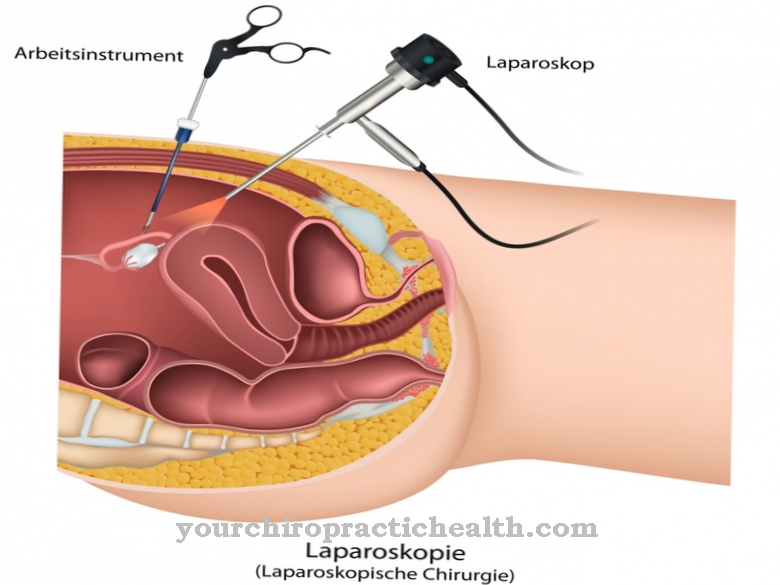A Vaginal smear is a smear of the vaginal wall that is carried out by the gynecologist if necessary. It is used to determine the current stage of the cycle and diagnose diseases that affect the vagina and is not to be equated with the cervical swab.
What is a vaginal smear?

The biannual examination at the gynecologist includes, among other things, the vaginal smear. It is often equated with the portio smear, the smear directly on the cervix. However, with the vaginal swab, a sample is taken from the back third of the vaginal mucosa, which is not to be equated with the cervix.
A vaginal smear can first be used to determine which phase of the cycle the woman is in. This is where hormones are deposited that are used for diagnostics - for example as an indication of a hormonal imbalance or general hormonal activity. Regular vaginal swabs are very important to detect cancer.
It is considered to be a simple, yet very safe method of detecting tumor cells and precancerous stages at an early stage. Portio and vaginal swabs are often performed at the same time in order to obtain the best possible protection. Vaginal swabs are also carried out if fungal infections or similar diseases of the vagina are suspected for laboratory diagnostics of the smear.
Function, effect & goals
Vaginal swabs are usually done every six months as part of a regular pelvic exam. Some gynecologists use the creation of a new prescription for the birth control pill and are reluctant to give out the prescription without this examination.
For the vaginal smear, the vagina is first widened with a speculum or raven's bill so that the gynecologist can easily take the smear and see where it is in the vagina. He inserts a cotton swab through the speculum, which is open at the top, and strokes it along the vaginal wall in the upper third of the vagina. If necessary, a new cotton swab is used for the cervical swab. The sample obtained is usually first subjected to a Pap test in order to detect irregular cell growth. Various cancers, above all cervical cancer and its precursors, can be detected early. This considerably simplifies any necessary treatment. Hormonal and microbial functional diagnostics are also possible.
This could be used to detect fungal diseases or unusual hormonal activities. With the help of a vaginal smear, the pH value of the vagina is also determined, especially during pregnancy, as this can fluctuate and make the woman more susceptible to infections. Vaginal swabs are therefore one of the examinations that are regularly carried out at the check-up appointments, especially in the first and second trimesters of pregnancy. In this way, unusual hormonal activities, as well as pathogens that could negatively affect the baby and mother, can be detected in time.
When treating fungal infections, for example, which are not uncommon in pregnancy, the gynecologist can intervene in good time before the woman and child are noticeably affected. Forensic medicine also uses vaginal swabs to detect sexual abuse. Traces of sperm in the vagina can be detected in this way, from which the DNA of the perpetrator can be determined. This works up to three days after the sexual intercourse and serves the jurisprudence as reliable evidence of sexual crimes against the woman.
Risks, side effects & dangers
Compared to other diagnostic methods, the vaginal smear is considered to be minimally invasive and does not involve any particular risks. The first smear is often uncomfortable and emotionally stressful for young women, which is why the treating gynecologist should be very careful with them.
If the vaginal smear is performed on a woman who is not yet sexually active, special caution may be required because of the hymen. This could tear through the introduction of a speculum - if this is important to the patient, the gynecologist will try not to injure the hymen or, if possible, avoid a vaginal smear. At the latest when the first contraceptive pill is prescribed, a vaginal smear should be taken, as the first pathogens can enter the vagina with the first sexual activity. Mainly it's about cancer prevention. Vaginal swabs are also difficult for women who suffer from vaginismus, as the introduction of a speculum is associated with great pain and the gynecologist can therefore often not introduce it at all.
Vaginismus sometimes also develops after sexual abuse, but when the vaginal smear is absolutely necessary for medical reasons. Such situations must be mastered by the gynecologist with great sensitivity in order not to aggravate the woman's already existing trauma. As a rule, vaginal swabs are neither dangerous nor particularly emotionally stressful for women. Over time, most women get used to it, which is aided by trust in the gynecologist and a generally good relationship. The vaginal smear that is carried out regularly during pregnancy is also nothing special, especially in the first and second trimesters. After that, they are carried out less often and only when necessary, but no longer with every examination.
Especially towards the end, the gynecologist has to be a little more careful and also make sure that it does not hurt the woman. The vaginal area is supplied with more blood than usual and can therefore react more sensitively. Caution is also advised with a cervical swab, but nothing will happen with an experienced gynecologist.

















.jpg)







.jpg)


